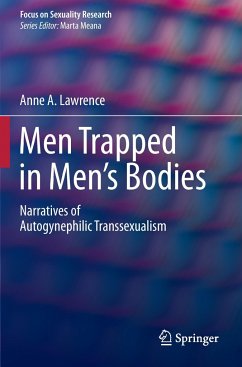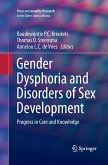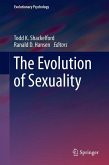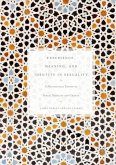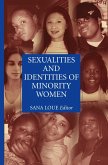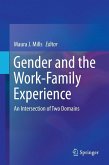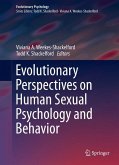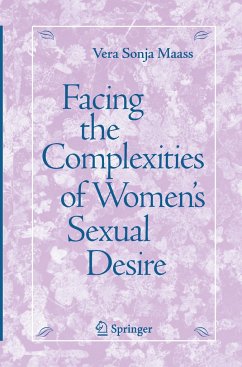There are few topics in sex research as compelling and confounding to researchers, clinicians, and the general public as that of transsexualism. Upending normative notions of gender, eroticism, and identity, it poses significant scientific and clinical challenges. The book addresses a fascinating and largely unexplored topic within the study of transsexualism: The feelings and desires of conventionally masculine men who are attracted to women yet want to become women themselves. Through a collection and discussion of vivid first-person narratives, the book provides an in-depth examination of these men's unusual propensity to be sexually aroused by the thought of themselves as women and how these men's sexual feelings influence their decisions to seek or undergo sex reassignment.
These narratives about autogynephilia by autogynephilic male-to-female (MtF) transsexuals provide the first comprehensive documentation of the erotic ideation that underlies the most common form of MtF transsexualism. The narratives provide empirical evidence for Blanchard's theory of MtF transsexual motivation, and thus are of interest to researchers and theorists studying the phenomenology of MtF transsexualism. The narratives are likely to be eye-opening to psychologists, psychiatrists, physicians, and other professionals who work with MtF transsexuals: Most clinicians probably do not fully appreciate the erotic underpinnings of their clients' condition. A better understanding of their clients' autogynephilic feelings and motivations would enable these professionals to provide more empathetic and effective clinical care.
Hinweis: Dieser Artikel kann nur an eine deutsche Lieferadresse ausgeliefert werden.
These narratives about autogynephilia by autogynephilic male-to-female (MtF) transsexuals provide the first comprehensive documentation of the erotic ideation that underlies the most common form of MtF transsexualism. The narratives provide empirical evidence for Blanchard's theory of MtF transsexual motivation, and thus are of interest to researchers and theorists studying the phenomenology of MtF transsexualism. The narratives are likely to be eye-opening to psychologists, psychiatrists, physicians, and other professionals who work with MtF transsexuals: Most clinicians probably do not fully appreciate the erotic underpinnings of their clients' condition. A better understanding of their clients' autogynephilic feelings and motivations would enable these professionals to provide more empathetic and effective clinical care.
Hinweis: Dieser Artikel kann nur an eine deutsche Lieferadresse ausgeliefert werden.
"In this highly informative book, Lawrence analyzes theory and research on autogynephilia and presents excerpts from a rich array of first-person narratives collected from autogynephilic individuals. ... Her prose is clear, crisp, precise, and facilitates understanding of a complex phenomenon. In sum, Lawrence has written a book that will be of great value to researchers, clinicians, lay people, and, perhaps most importantly of all, to people who experience autogynephilic feelings and desires." (Richard A. Lippa, Archives of Sexual Behavior, Vol. 44, 2015)
"Anne Lawrence's Men Trapped in Men's Bodies: Narratives of Autogynephilic Transsexualism is directed toward transsexuals, transsexual researchers, sociologists, and others with an interest in human sexuality. The central tenets of the book are derived from Ray Blanchard's (1993) theory of autogynephilia... In the midst of one of the most serious controversies in the field of transsexualism, Lawrence stands with Blanchard's typology (which she identifies with) and presents dozens of narratives from other transsexuals that support Blanchard's theory of autogynephilia as a male paraphilia. The theory argues with "certainty" that there are only two types of transgendered individuals: individuals who are either effeminate gay men who change gender to make themselves sexually attractive to heterosexual men or heterosexual men who change gender so they can lust after their new female bodies. In the latter case, the desire and lust are paraphilic in origin." Leslie M. Lothstein PsycCRITIQUES August 28, 2013, Vol. 58, Release 35, Article 9 Men Trapped in Men's Bodies: Narratives of Autogynephilic Transsexualism is directed toward transsexuals, transsexual researchers, sociologists, and others with an interest in human sexuality. The central tenets of the book are derived from Ray Blanchard's (1993) theory of autogynephilia... In the midst of one of the most serious controversies in the field of transsexualism, Lawrence stands with Blanchard's typology (which she identifies with) and presents dozens of narratives from other transsexuals that support Blanchard's theory of autogynephilia as a male paraphilia. The theory argues with "certainty" that there are only two types of transgendered individuals: individuals who are either effeminate gay men who change gender to make themselves sexually attractive to heterosexual men or heterosexual men who change gender so they can lust after their new female bodies. In the latter case, the desire and lust are paraphilic in origin." Leslie M. Lothstein PsycCRITIQUES August 28, 2013, Vol. 58, Release 35, Article 9

